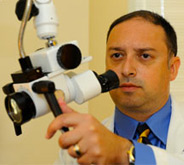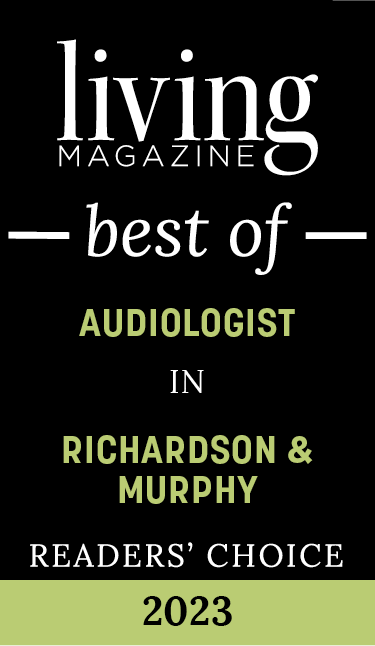- (972) 480-8877
- 2821 E. President George Bush Turnpike, Suite 509 | Richardson, TX 75082
Balloon Sinuplasty
Balloon sinuplasty is a minimally invasive procedure used to treat chronic sinusitis and other sinus-related issues. It involves inserting a small, flexible balloon catheter into the blocked sinus passages. Once in place, the balloon is gently inflated to widen the sinus opening, helping to restore normal drainage. Afterward, the balloon is deflated and removed, leaving the sinus pathways open without needing to remove any bone or tissue.
The procedure is often done in a doctor’s office under local anesthesia and has a shorter recovery time compared to traditional sinus surgery. It’s a good option for people with chronic sinus infections who haven't found relief from medications but want to avoid more invasive surgery.
How It Works
- Insertion of the Balloon Catheter – A small, flexible balloon catheter is inserted into the sinus passage through the nostril.
- Balloon Inflation – The balloon is gently inflated to widen the blocked sinus opening, creating more space for mucus to drain properly.
- Flushing of the Sinuses – Saline solution may be used to flush out built-up mucus and debris.
- Removal of the Balloon – After widening the passage, the balloon is deflated and removed, leaving the sinus pathways open.
Benefits of Balloon Sinuplasty
- Minimally invasive – No cutting or removal of bone/tissue.
- Quick recovery – Most patients return to normal activities within 24-48 hours.
- Less pain & bleeding – Compared to traditional sinus surgery.
- Long-lasting relief – Many patients experience long-term improvements in sinus drainage and symptoms.
- Performed under local anesthesia – Often done in a doctor’s office, avoiding general anesthesia.
Who is a Good Candidate?
Balloon sinuplasty is ideal for people who:
- Have chronic sinusitis (long-lasting or recurring sinus infections).
- Experience nasal congestion, facial pain, or pressure due to blocked sinuses.
- Have not found relief from medications.
- Prefer a less invasive option before considering full sinus surgery.
Possible Side Effects & Risks
Though generally safe, some possible side effects include:
- Mild facial tenderness or swelling
- Nasal congestion for a few days
- Minimal bleeding
- Rare risk of infection
How Long Does It Last?
For most people, the results of balloon sinuplasty last for years. Studies show that many patients continue to experience relief for at least 2-5 years, with some benefiting even longer.
Recovery
Recovery from balloon sinuplasty is usually quick and relatively easy compared to traditional sinus surgery. Most people return to normal activities within 24-48 hours, though full recovery may take about a week.
Immediate Recovery (First 24-48 Hours)
- Mild discomfort – Some patients feel slight pressure, congestion, or tenderness in the sinuses, but pain is usually minimal. Over-the-counter pain relievers like ibuprofen or acetaminophen are often enough.
- Nasal congestion – You may feel "stuffed up" due to swelling, similar to having a cold. This typically improves within a few days.
- Mild bleeding – Light nasal bleeding or drainage may occur for the first day or two.
- Fatigue – Some people feel slightly tired, especially if they had the procedure under sedation.
- Avoid blowing your nose for at least 24-48 hours to allow healing.
- Use a saline spray to keep nasal passages moist and aid healing.
- Sleep with your head elevated to reduce swelling and congestion.
- Avoid strenuous activities or heavy lifting for a few days.
- Most people experience improved breathing and sinus drainage within a week.
- Sinus inflammation continues to decrease over several weeks.
- Full healing and long-term relief are usually noticeable by four to six weeks.
- Severe pain or swelling that doesn’t improve.
- Heavy or prolonged bleeding beyond a couple of days.
- Signs of infection (fever, increased facial pain, yellow/green nasal discharge).
The First Week
Long-Term Recovery
When to Call Your Doctor
Complications are rare, but contact your doctor if you experience:
Overall, most people find the recovery process smooth, with minimal downtime.
Disclaimer:
The pictures displayed in this website are images of physicians, patients and employees who have consented to have their pictures in this website.
ENT SERVICES
We treat a variety of conditions including allergy problems, conditions of the nose, throat and sinuses, hearing problems, as well as head and neck issues. We are equipped to see all populations from pediatric to geriatric patients.
 CALL NOW
CALL NOW
BOARD CERTIFIED
Dr. Morris Gottlieb is board certified in Otolaryngology – Head and Neck Surgery and is a Fellow of the American College of Surgeons, a distinction that fewer than 1% of all surgeons hold.
 READ BIO
READ BIO
CONTACT US
We are conveniently located in Richardson, Texas on the President George Bush Turnpike, just east of US75.
CONTACT US



